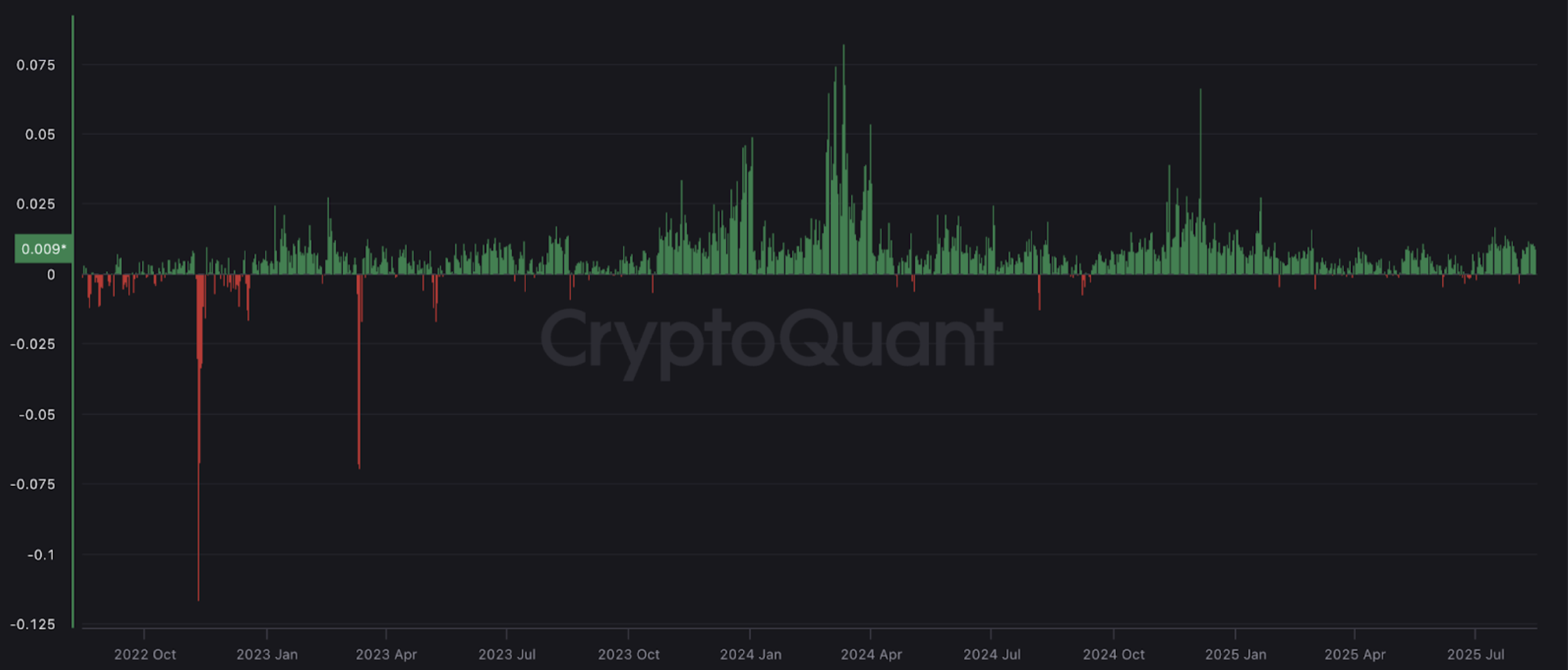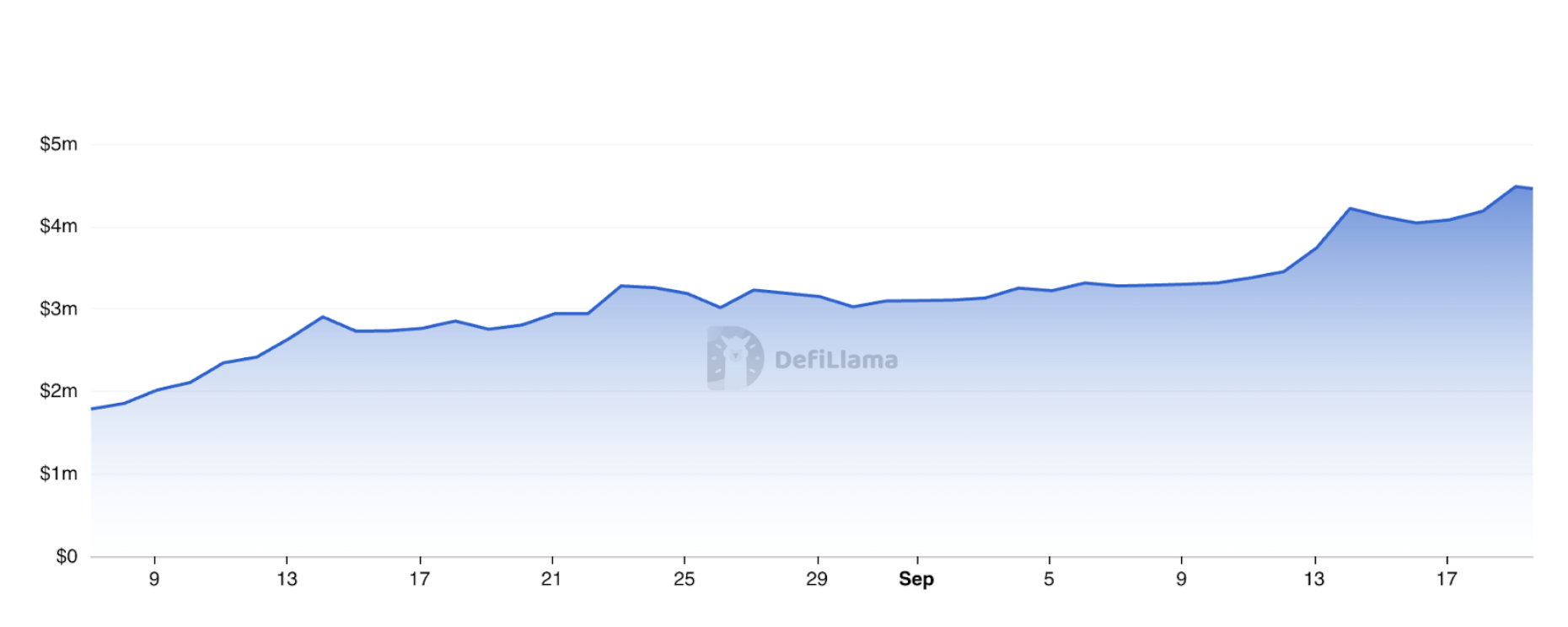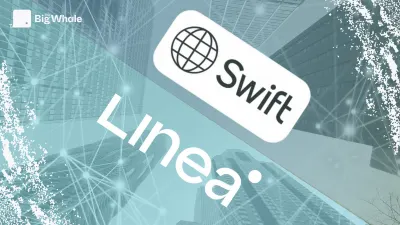TBW - How Boros aims to complement Pendle with new yields

What you need to know before you start
Boros is a trading app specialising in yields. It offers investors the opportunity to use leverage on different income streams, starting with funding rates perpetual contracts, the most traded category of crypto derivatives.
In practical terms, Boros allows you to transform a variable rate paid or received on a position into a fixed rate. A way of neutralising the often extreme volatility of these rates and providing greater visibility over the cost of holding a position.
The protocol is currently only deployed on Arbitrum, Ethereum's layer 2. Launched very recently, it remains accessible to a limited number of users, a conscious choice to reduce the risks associated with its initial experiments.
The origins of Boros
Boros was born in the wake of Pendle, one of DeFi's flagship protocols for trading returns. The two projects are closely linked: the same team is behind their development, with a logic of complementarity.
Pendle introduced a mechanism that has largely contributed to democratising the crypto fixed-rate market. In it, each yield-generating asset can be split into two components: the Principal Token (PT), comparable to a zero-coupon bond since it pays nothing but is guaranteed at maturity, and the Yield Token (YT), which concentrates the income attached to the asset and can be traded separately.
>> Pendle (PENDLE): Analysis of DeFi's new star
This approach has seen massive success with USDe, Ethena's stablecoin. Thanks to its basis trading strategy (a short position on a perp contract collateralised by the asset held in spot) the USDe generates regular income.
It now accounts for more than half of the deposits on Pendle: $9.03 billion out of a total of $13.95 billion, of which $5.6 billion relates directly to returns and $3.46 billion to the anticipation of Ethena's future airdrop. This partnership has propelled both protocols to the top of the DeFi rankings.
>> Ethena (ENA): Issuer analysis of stablecoin USDe
Ethena has thus popularised fundings, a funding mechanism that continuously adjusts the price of a perp to that of its underlying. When the contract is trading above the spot price, long positions pay the shorts, and vice versa when the perp is undervalued. These returns can be very lucrative in a bull market, but their high volatility makes them difficult to exploit by strategies that require stable flows.
It is precisely this limitation that led the Pendle team to design Boros. Pendle's architecture does not allow it to handle fundings, since this is a source of return that is primarily offchain, derived from centralised platforms, whereas Pendle focuses exclusively on onchain tokens.
With Boros, the aim is to go further: to enable leveraged trading on fundings and, more broadly, on any type of return, whether blockchain-native or not.
Functioning
Boros relies on an oracle responsible for transmitting the offchain data needed to calculate returns. Unlike Pendle, it therefore does not need a specific token to operate.
For the time being, the application is limited to trading fundings. Each market corresponds to the funding of an asset on a given platform and has a maturity date. Only two assets are currently covered: bitcoin and ether, via Binance and Hyperliquid.
The core of the mechanism is based on Yield Units (YU). Each YU represents the yield on a unit of collateral until market maturity. For example, holding a YU-ETHUSDT entitles the holder to receive settlements from the funding of an ether until maturity.
Operation adapts to the pace of each exchange. At Binance, fundings are settled every eight hours. At each maturity, YU holders pay the fixed rate corresponding to their purchase price and receive the variable market rate; conversely, those who have sold YUs collect the fixed rate and pay the variable rate.
Another notable difference with Pendle is that Boros directly integrates a leverage system. For the time being, this remains limited (below 2), but should be gradually increased to improve capital efficiency as the protocol gains scale.
Strategies
With Boros, several approaches are possible. The first is to buy YU to hedge the funding of an open position. This locks in the cost of maintaining the position in advance and protects against rate volatility.
Another strategy is to sell YU, which amounts to freezing the return on a basis trade. In this case, the investor chooses to receive a fixed rate in return for paying the variable rate.
Boros can also be used as a simple speculation tool: betting up or down on the movement in the price of a YU amounts to anticipating the trajectory of fundings.
Finally, the protocol can provide liquidity via vaults that deploy automated market making strategies. This option can be profitable when annualised fixed rates move upwards, but it is not without risk: depending on the market, liquidity providers may suffer a shortfall or even losses.
Fixed yields: the new trend in DeFi
Boros is part of a wider movement: the rise of fixed yields in DeFi. Still marginal two years ago, this demand has become more pronounced with the success of Pendle, which has become a must-have protocol in a short space of time.
The first wave of decentralised applications was based almost exclusively on variable rates. The best example remains Compound, whose lending and borrowing model adjusted rates in real time according to the use of available assets. This choice was explained as much by the technical constraints of blockchains at the time as by the flexibility provided by floating rates.
The landscape has changed. More and more players are now exploring the fixed-rate route. Euler offers stable-rate loans on certain vaults, such as the Usual stablecoin, while Morpho V2 has made this mechanism one of its priorities.
Boros completes this evolution by applying the logic of fixed to another source of return: fundings. Where these flows have always been marked by high volatility, the protocol seeks to neutralise it to offer traders greater visibility. The aim: to make the costs of maintaining a long or short position more predictable and enable more robust strategies to be built.

Limits and risks
Boros differs from Pendle in its choice of technology: instead of an automated market maker (AMM), it relies on an order book. This model is often considered to be more effective in ensuring genuine price formation, but it faces a major challenge at launch: attracting sufficient liquidity to guarantee smooth and competitive execution.
The vaults that facilitate the provision of liquidity are not risk-free. They involve more complex strategies than a simple deposit in an MA and can expose investors to losses, unlike Pendle mechanisms which limit the impact of volatility if you hold your position until maturity.
It should also be remembered that Boros is tackling a market that is still in its infancy. The total open interest on all perpetual contracts exceeds $200 billion, but Boros only captures $78 million of that. The same is true of its total locked-in value (TVL), which remains low despite steady growth. In other words, the protocol is still tiny compared with the scale of the area it aims to cover, and its development will take time before it reaches sufficient market depth to accommodate institutional-sized positions.

The future of Boros
Boros is intended to complement the Pendle ecosystem rather than break away from it. No new tokens are planned: the protocol is based on PENDLE, which is already in circulation. Its business model is based on two sources of revenue: a 0.05% fee on each exchange and a 0.2% commission on interest payments.
The ambition is clear: to become the benchmark DeFi marketplace for interest rate trading. To achieve this, Boros has chosen to focus its launch on funding, one of the crypto market's biggest sources of yield. A way of attacking a solid base before expanding its offering.
Beyond this positioning, Boros is looking to enrich DeFi by introducing new sources of revenue linked directly to volatility. The standardisation of fixed rates opens the door to more sophisticated strategies, which require greater visibility of their costs and returns. Yield Units (YUs), which tokenise these flows, could become a new building block for other protocols, like Pendle's Principal Tokens (PTs). A cascading integration that, if confirmed, would strengthen the whole ecosystem.



